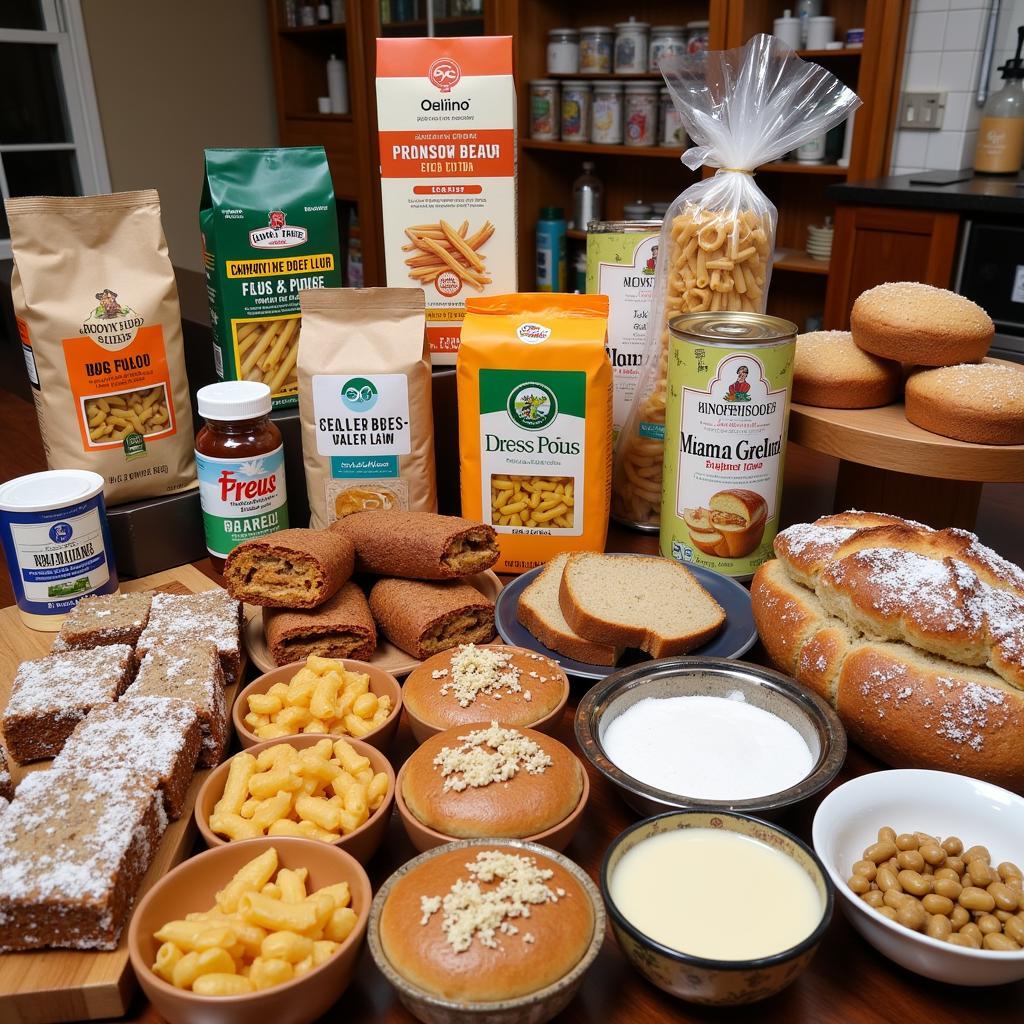Embarking on a gluten challenge can be daunting, especially when it comes to choosing the right foods. A well-structured Gluten Challenge Food List is crucial for identifying sensitivities accurately and minimizing discomfort. This comprehensive guide will provide you with all the information you need to create a successful and insightful gluten challenge experience.
Understanding the Gluten Challenge
Before we delve into the specifics of a gluten challenge food list, let’s clarify what this process entails. A gluten challenge involves reintroducing gluten into your diet after a period of elimination, typically several weeks to months. This is often recommended for individuals with non-celiac gluten sensitivity (NCGS) or those who suspect they might have a gluten intolerance.
The purpose of a gluten challenge is twofold:
- Confirmation of Sensitivity: It helps determine whether gluten is genuinely triggering your symptoms.
- Assessment of Tolerance: It helps identify the amount and type of gluten your body can handle comfortably.
Building Your Gluten Challenge Food List
A successful gluten challenge hinges on a well-planned food list. Here’s a step-by-step guide to creating yours:
Phase 1: Gradual Reintroduction
Begin by incorporating small amounts of gluten-containing foods into your diet. The key is to start low and go slow.
- Day 1-2: 1/4 slice of bread or equivalent
- Day 3-4: 1/2 slice of bread or equivalent
- Day 5-7: 1 slice of bread or equivalent
Remember to listen to your body throughout this phase. If you experience any adverse reactions, stop the challenge and consult your healthcare professional.
Phase 2: Expanding the Gluten Spectrum
Once you’ve successfully reintroduced small amounts of gluten, you can gradually increase the quantity and variety. Here’s a sample gluten challenge food list for this phase:
- Bread: Whole wheat, white, sourdough
- Pasta: Wheat-based pasta (various shapes and sizes)
- Cereal: Wheat-based cereals, oatmeal (may contain traces of gluten)
- Baked Goods: Cookies, cakes, muffins (made with wheat flour)
- Beer: Conventional beers containing gluten
Phase 3: Identifying Hidden Sources
As you progress, it’s essential to be mindful of hidden sources of gluten. These can often be found in processed foods, sauces, and condiments.
- Soy Sauce: Many soy sauces contain wheat. Opt for tamari or coconut aminos as gluten-free alternatives.
- Processed Meats: Sausages, deli meats, and some burgers might contain gluten as a binder.
- Salad Dressings: Always check the labels as some dressings contain gluten-based thickeners.
 Gluten-Free Alternatives
Gluten-Free Alternatives
By diligently following this phased approach and paying attention to both obvious and hidden gluten sources, you can gain valuable insights into your body’s response to gluten.
Navigating the Challenge
The gluten challenge is a journey of self-discovery. Here are some additional tips to ensure a successful experience:
- Keep a Detailed Food Journal: This will help you track your food intake, symptoms, and any potential triggers.
- Stay Hydrated: Drinking plenty of water can aid digestion and minimize potential discomfort.
- Listen to Your Body: Don’t push yourself beyond your limits. If you experience any severe or persistent symptoms, stop the challenge immediately.
- Consult Your Healthcare Provider: It’s crucial to work with a qualified healthcare professional throughout the entire process. They can help you interpret your results and develop a personalized dietary plan.
Conclusion
A well-structured gluten challenge food list is an indispensable tool for anyone seeking to understand their body’s relationship with gluten. By approaching the challenge with a clear plan, meticulous tracking, and open communication with your healthcare provider, you can gain invaluable insights into your dietary needs and make informed choices that support your overall well-being. Remember, knowledge is power, and understanding your body’s unique responses is the first step towards optimal health.
FAQs
1. How long does a gluten challenge typically last?
The duration of a gluten challenge can vary depending on individual factors and the guidance of your healthcare professional. Generally, it lasts anywhere from a few days to a couple of weeks.
2. What are some common symptoms to watch out for during a gluten challenge?
Common symptoms of gluten intolerance include bloating, gas, diarrhea, constipation, fatigue, brain fog, and skin rashes. However, symptoms can vary widely from person to person.
3. Can I conduct a gluten challenge on my own?
While this guide provides comprehensive information, it’s highly recommended to consult with a qualified healthcare professional before starting a gluten challenge. They can provide personalized guidance and ensure your safety throughout the process.
4. What should I do if I experience severe symptoms during the challenge?
If you experience any severe or persistent symptoms, it’s crucial to stop the challenge immediately and seek medical attention.
5. Are there any alternatives to a gluten challenge?
While a gluten challenge is often the most accurate way to diagnose gluten sensitivity, alternative testing options might be available. Discuss these with your healthcare provider to determine the best course of action.
Need Further Assistance?
Navigating the world of food sensitivities can be challenging. If you need support or have any questions, our team at Mina Cones Food is here to help. We offer a range of resources, including:
- Food service and retail: Explore our diverse selection of gluten-free products.
- Food preference sheet template: Download our free template to keep track of your dietary needs and preferences.
- Raw food diet delivery: Discover our convenient and nutritious raw food delivery options.
For personalized guidance, contact our dedicated customer support team:
- Phone: 02437655121
- Email: [email protected]
We’re committed to supporting your journey towards optimal health and well-being.
Don’t hesitate to reach out!
Explore More:
- Gluten free wholesale foods: Find high-quality gluten-free products for your business.
- Corn free diet foods: Learn more about corn-free dietary options.